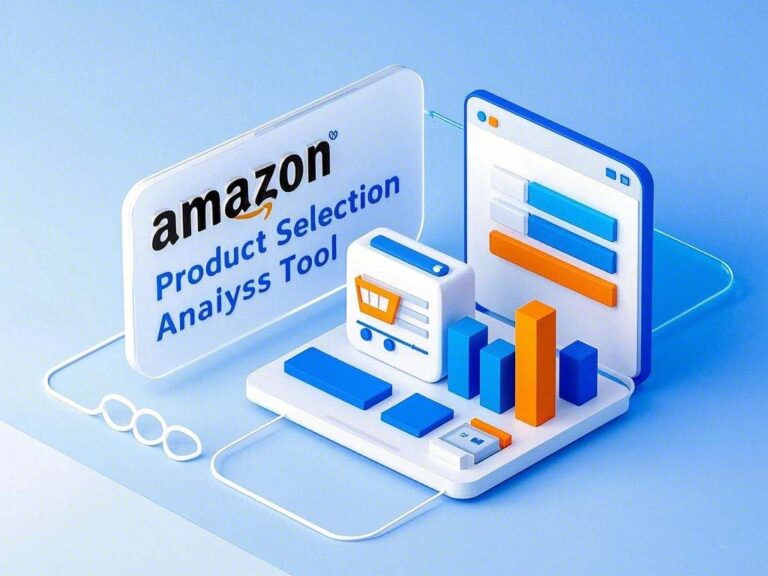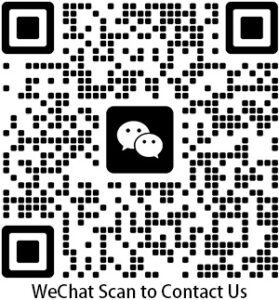In today’s intensely competitive cross-border e-commerce landscape, how to quickly and accurately carry out Amazon product selection has become a top challenge for many sellers. An overwhelming flood of information, rapidly shifting markets, and the constant emergence of competitors make “gut-feel” product selection extremely risky. With the advent of big data, using data-driven, scientific methods for product selection is now essential. Against this backdrop, the role of an “Amazon product selection data analysis and reporting tool” becomes indispensable—not only can it significantly improve efficiency, but it can also greatly reduce risk by enabling precise, visualized market insights and decision-making.
I. Introduction: Pain Points in Amazon Product Selection and the Importance of Data
When it comes to cross-border e-commerce, product selection often determines whether a store flourishes or flounders. Yet in actual practice, many sellers encounter the following pain points:
- Information Overload: With countless products on the Amazon marketplace, the sheer volume of data can be overwhelming, making it difficult to extract actionable insights.
- Fierce Competition: The influx of numerous sellers results in heated battles in popular categories, where profit margins can be quickly squeezed.
- Rapid Market Changes: Consumer preferences evolve at lightning speed, not to mention promotional events and policy shifts. Hesitation can mean losing out on hot new opportunities.
- Blind Decision-Making: Without solid data, many product selection decisions are based on experience or hearsay, leading to high levels of uncertainty.
Confronted with these challenges, more and more sellers now realize that data is the bedrock of sound decision-making. By using a “Amazon product selection data analysis and reporting tool,” sellers can sift through massive amounts of data, zero in on market trends, analyze competitor movements, and assess product potential—thereby significantly increasing their chances of success.
II. Why Amazon Product Selection Data Analysis Reports Are Important and What They Include
1. Market Insights and Opportunities
The Amazon marketplace changes by the minute, and trends in popular categories and keywords can shift rapidly. By employing a specialized Amazon product selection data analysis and reporting tool, sellers can stay on top of search volumes, sales patterns, and BSR (Best Sellers Rank) fluctuations across categories, seizing new market opportunities before they become saturated.
2. Evaluating Product Potential and Reducing Risk
Product-specific metrics such as sales volume, price range, and review feedback help sellers identify which items may hold the most promise. Coupled with data on competition intensity and keyword popularity, sellers can more accurately evaluate a product’s profit potential and future growth, thus minimizing the risks of overstocking or missing the mark entirely.
3. Analyzing Competitors and Formulating Strategies
On Amazon, any promising product is likely to face numerous copycats or direct competitors. A Amazon product selection data analysis and reporting tool helps sellers track competitor pricing, marketing campaigns, review dynamics, and keyword strategies, enabling them to create more targeted and differentiated approaches that boost competitiveness.
4. Boosting Selection Efficiency and Saving Time/Costs
Data-driven product selection is far more structured and purposeful than blindly searching for ideas. Sellers can focus on items with genuine potential for profitability or that show strong signs of becoming a bestseller, thereby reducing the time spent and labor costs in product research.
Main Components of Product Selection Data Analysis Reports
- Market Data: Market size, growth trends, seasonal demand, and target demographic profiles.
- Product Data: Sales volume, BSR rankings, pricing, number and quality of reviews, variations, relevant keywords, and more.
- Competitor Data: Pricing strategy, ranking trends, review feedback, main keyword tactics, and marketing campaigns for rival products.
- Keyword Data: Search volume, competition levels, and long-tail keyword mining, all indispensable for effective listing optimization and PPC advertising later on.
In essence, a well-rounded Amazon product selection data analysis and reporting tool should encompass these four main areas, presenting the results in a user-friendly, visualized manner that empowers sellers to make informed decisions quickly.
III. Limitations of Traditional Product Selection Data Analysis
- Low Efficiency: Without professional tools, sellers must manually gather data for multiple categories and keywords. This can be extremely time-consuming and prone to duplication of efforts, making it nearly impossible to ensure both accuracy and completeness.
- High Risk of Errors: Manually inputting or organizing data can easily lead to omissions, duplicates, or calculation mistakes, skewing results and potentially derailing product selection decisions.
- Limited Scope for In-Depth Analysis: Lacking adequate data visualization and analysis models, sellers find it challenging to draw trend-based conclusions from large datasets. Detailed segmentation or differentiation in competitive markets becomes even more difficult.
- Tedious Report Creation: Hand-compiled information, summarized in spreadsheets or documents, is both time-consuming and quickly outdated, lacking real-time insights for a dynamic marketplace.
Given these challenges, how can sellers boost efficiency and ensure the accuracy and depth of their data analysis? The answer lies in specialized Amazon product selection data analysis and reporting tools, capable of providing a unified solution for data consolidation, automated reporting, and in-depth insights.
IV. Pangolin Amazon Data Pilot: The Ultimate Data Powerhouse for Efficient Product Selection
To escape the confines of traditional manual selection, many sellers have turned to professional Amazon data analysis tools. Among them, Pangolin Amazon Data Pilot stands out for its robust capabilities and user-friendly interface. As a premier Amazon product selection data analysis and reporting tool, it features the following key advantages:
1. Multi-Dimensional Data Collection
Pangolin Amazon Data Pilot supports data gathering from multiple angles: by keyword, ASIN, category, or bestseller rankings. Whether you need to research every product under a certain keyword, scan a category’s best-selling items, or perform in-depth analysis on a specific ASIN, this tool can do it quickly and comprehensively.
- Example: Suppose you’re researching the keyword “Wireless Headphones.” Pangolin Amazon Data Pilot can swiftly capture all vital product data under this search—pricing, BSR, star ratings, and review count—and compile it into an integrated report, allowing you to gauge potential winners at a glance.
2. Automated Report Generation
Packed with various pre-built reporting templates, Pangolin Amazon Data Pilot lets you automatically generate market analysis, product analysis, competitor analysis, and keyword analysis reports. This significantly trims the time it takes to compile and arrange data manually.
- Example: If you need a deep dive into how your competitors structure pricing, marketing strategies, and review management, Pangolin Amazon Data Pilot can produce a “competitor analysis report,” lining up multiple products side by side for easy comparison—and revealing your pathway to differentiation.
3. Customizable Reports
Every seller’s data requirements will differ. Some sellers focus heavily on sales velocity and BSR, while others might pay closer attention to keyword rankings and review sentiment. Pangolin Amazon Data Pilot allows users to tailor reports to specific needs—customizing data fields, column orders, and report formats to suit various business scenarios.
- Example: A home-appliance seller might prioritize “product wattage,” “dimensions,” or “materials.” In Pangolin Amazon Data Pilot, they can simply include these fields in their reporting format so that the data aligns more directly with their operational needs.
4. Data Visualization
Data visualization is a game-changer when it comes to making product selection decisions. Instead of poring over lines of text in a spreadsheet, bar charts and line graphs make it far easier to spot market trends, sales spikes, or price fluctuations. Pangolin Amazon Data Pilot offers a wide range of chart types—bar, line, pie, and more—helping sellers quickly detect patterns.
- Example: Observing a competitor’s product whose sales graph has been climbing steadily but has plateaued in the past two weeks could be a red flag. By cross-referencing competitor and keyword data, you might uncover a new market entrant or realize the product is slipping into a seasonal off-peak period.
5. Convenient Data Export and Sharing
For team collaborations or strategic discussions, a well-structured product selection report often needs to be shared with colleagues or partners. Pangolin Amazon Data Pilot offers easy exporting of reports into Excel, CSV, and other common formats, making it simple to perform further custom analysis or to share findings with stakeholders.
- Example: If you want to hand over a short-list of potential winning products to your supply chain or customer service teams, simply export the relevant report and share it by email or a file-sharing platform—no compatibility issues.
6. Summarizing the Tool’s Benefits
- Simple to Operate: No advanced coding or technical expertise needed; just a few clicks to capture data and generate reports.
- Significant Efficiency Gains: Automated data collection and reporting free up time for strategic thinking.
- Comprehensive, Reliable Data: Multi-source data integration reduces inaccuracies or gaps associated with manual gathering.
- More Informed Decisions: Visual charts and simplified reporting enable data-backed decision-making rather than guesswork.
V. Case Study: Practical Product Selection with Pangolin Amazon Data Pilot
To fully illustrate the capabilities of Pangolin Amazon Data Pilot as an Amazon product selection data analysis and reporting tool, let’s examine a specific selection scenario:
1. Chosen Category and Hypothetical Scenario
Assume a seller is interested in the “Outdoor Sports & Fitness” category, hoping to catch a rising wave of consumer demand for fitness equipment just before summer arrives.
2. Data Collection and Report Generation
By entering targeted keywords (e.g., “Home Workout Equipment,” “Resistance Bands,” “Outdoor Fitness”) into Pangolin Amazon Data Pilot, the seller automatically retrieves relevant product data. They then use the built-in “Market Analysis” and “Competitor Analysis” templates, which generate comprehensive Excel files with a single click.
3. Analyzing the Reports and Making Decisions
In the market analysis report, the seller observes that “Resistance Bands” has steadily growing search traffic and sales volume for the past three months, with several new ASINs quickly climbing in the rankings. Meanwhile, the competitor analysis reveals that top rival products have strong pricing and review momentum yet share a common shortcoming—most are made of similar materials and offer no extras.
4. Actionable Strategies
Based on the report findings, the seller can:
- Pursue Differentiated Packaging: Add accessories like a portable carrying pouch or bundle the bands with other small fitness items to stand out.
- Optimize Keyword Targeting: Focus on high-impact longer-tail keywords such as “Resistance Bands with Handles” or “Home Gym Kit” to improve organic reach.
- Refine Pricing Strategy: Start with a competitive price, then adjust after receiving initial feedback and reviews to maximize profitability.
From this example, it’s clear that with the help of a specialized Amazon product selection data analysis and reporting tool like Pangolin Amazon Data Pilot, sellers can pinpoint market opportunities and form effective product launch and promotion strategies.
VI. Other Pangolin Amazon Data Solutions: Meeting Diverse Needs
Some advanced scenarios may call for an even broader scale of real-time data gathering or integration with existing systems. In addition to Pangolin Amazon Data Pilot, Pangolin offers two other robust solutions:
1. Pangolin Amazon Scrape API
This API suits businesses requiring large-scale, high-frequency data collection, such as big data providers, research organizations, or those conducting wide-reaching cross-border e-commerce analyses. The Scrape API features robust concurrency, customizable capture rules, and automatic data monitoring, so users can keep tabs on competitor price shifts, stock levels, and review variations in near real-time.
2. Pangolin Amazon Data API
Companies that want to incorporate structured Amazon data directly into internal ERP, BI, or other operational systems should consider the Pangolin Data API. It provides standardized, easily queryable product information, market indicators, and keyword data, allowing seamless integration with a company’s existing analytics platforms. This is especially useful for enterprise-level users aiming to build a proprietary “product selection analytics platform” without massive development and upkeep costs.
Whether leveraging Pangolin Amazon Scrape API or Pangolin Data API, these solutions address scenarios where typical product selection tools might be insufficient—particularly in areas like real-time monitoring, large-scale data operations, and deep custom development.
VII. Conclusion and Future Outlook
In a rapidly evolving cross-border e-commerce arena, an “Amazon product selection data analysis and reporting tool” has become the cornerstone of success for many sellers. By utilizing such tools, sellers can not only stay informed of market changes and identify potential top-sellers but also significantly streamline the selection process, saving time and labor, and thereby gaining a decisive advantage on Amazon’s highly competitive platform.
With Pangolin Amazon Data Pilot, sellers can effortlessly integrate multi-dimensional data capture, automated reporting, and data visualization—putting data-driven decision-making within easy reach. Together with Pangolin’s Scrape API and Data API for larger-scale or highly customized requirements, it caters to diverse seller needs, ensuring comprehensive coverage for Amazon data.
Looking ahead, as cross-border e-commerce continues to grow and technologies like big data and AI become even more sophisticated, “data-driven product selection” will undoubtedly become the norm. Sellers who stay up-to-date with industry developments and deftly apply tools like Pangolin Amazon Data Pilot will be better positioned to seize opportunities and remain competitive. Ongoing learning, adaptation, and innovation are paramount to thriving in Amazon’s ever-shifting marketplace.
By exploring the deeper implications of the Amazon product selection data analysis and reporting tool, this article highlights both the central importance of data for product selection and the transformative impact tools like Pangolin Amazon Data Pilot can have on decision-making. Whether you’re a newcomer or a seasoned veteran, embracing data-focused practices and optimizing your selection workflow is the key to conquering Amazon’s future.



